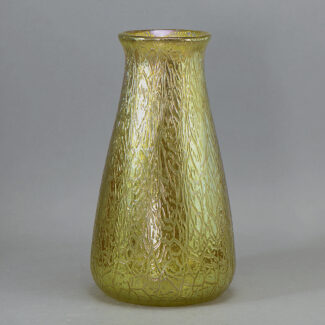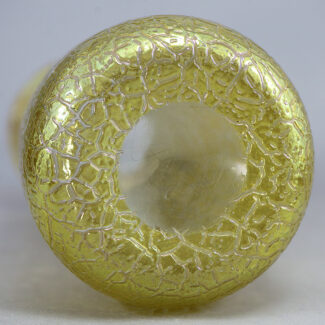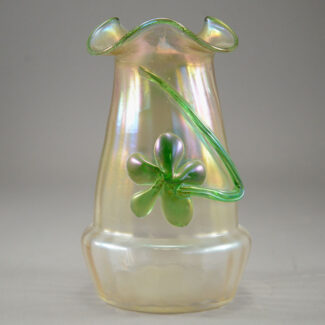Pukeberg (Sweden, 1871-1981)
Uno Westerberg (Sweden, 1914-1985)
Radial Ice Crystal Table Lamp, c. 1970s
mold-blown glass
7 ½” high (top of sides) / 13 ½” high (top of the socket)
Markings: Unmarked, well-documented form; lamps would have had a clear Pukeberg sticker that is often removed along the way.
Condition: Very Good
For Accuracy: a vintage lamp it may show expected light signs of age and use related wear. There is a factory production chip at the fitting joint that would have occurred during production.
Uno Westerberg (Sweden, 1914-1985) “Uno Westerberg is strongly associated with the Pukeberg glass factory, where the Design Archive has its current premises. Uno Westerberg studied interior design at Konstfack in Stockholm, but it was not in that field that he became a professional. Instead, it was within glass that he had to work. Uno Westerberg started as a 21-year-old designer of lighting glass at Arvid Böhlmark’s lamp factory in Stockholm, which then owned Pukeberg’s glass factory. Uno Westerberg’s lighting glass was produced in Pukeberg. They were austere lamps in classic shapes. His luminaires, intended for public environments, were in Folkets Hus premises, in churches and restaurants. In 1964, Böhlmark’s lamp factory moved its entire luminaire production and headquarters to Pukeberg. During the 1960s, Uno Westerberg’s design increasingly concentrated on ceiling lighting, wall and table fixtures for the home environment. He is represented at the Museum of Modern Art in New York with one of his table lamps, made in the overcrowding technique.
In parallel with the lighting glass, Uno Westerberg worked with decorative glass. The Spectra series, which consisted of bowls and vases, was exported to many countries, and was sold with great success, especially in the United States. When Böhlmarks shut down the production of lighting glass in the mid-1970s, Uno Westerberg became the artistic director of Pukebergs Glasbruk. It was his series Stratos , Ulla and Korall that primarily formed the basis for Pukeberg’s production and gave the mill continued success. He also devoted a lot of time to art glass.
Uno Westerberg designed many objects in a classic and functional spirit. He had good knowledge of materials and strove to combine his design language with market demand. He showed a more burlesque idiom in a number of gift items produced for an increasing tourist market. Candlesticks, letterpresses and ashtrays were some such products, where Vikings, boats, clowns and various kinds of animals were popular motifs. Uno Westerberg worked at the Pukeberg glassworks until 1981.” (Source: https://www.kalmarkonstmuseum.se/designarkivet/designers/uno-westerberg/)
















